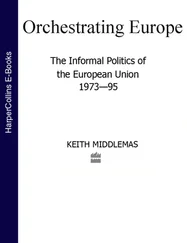Stanley Spencer 1
OUTSIDE COOKHAM – in London, at the Slade, in Taunton Stanley was the visitor, observing. But within Cookham he was emotionally the lover, absorbing: ‘I liked to take my thoughts for a walk and marry them to some place in Cookham,’ 2he was to say years later of his adolescence. When the place in question became sufficiently ‘holy’, Stanley’s ‘marriage’ could be almost literal, as he confessed in 1912 to Gwen Darwin: ‘I never want to leave Cookham. … I have taken some compositions [drawings] to a little place I know’ – it was off Mill Lane – ‘and buried them in the earth there.’ 3Gilbert remembered that Stanley had been reading Thomas Browne’s metaphysical Urn Burial. Stanley told Florence that he put his drawings into a tin ‘and while I go up and down to London, I often think of them. This is sentimental, but it does not matter. I shall go on being so. This is all very confidential, mind.’ It had to be so because his Slade fellow-students would have ragged him unmercifully had they known.
Gwen understood. Years later she too was to describe her own childhood feelings for, of all things, the cobbles of her grandfather Charles Darwin’s patio:
To us children everything at Down was perfect. … all the flowers that grew at Down were beautiful; and different from all other flowers. Everything was different. And better.
For instance, the path in front of the verandah was made of large round water-worn pebbles, from some beach. They were not loose, but stuck down tight in moss and sand, and they were black and shiny, as if they had been polished. I adored those pebbles. I mean, literally adored; worshipped. This passion made me feel quite sick sometimes. 4
At this probationary period in his creativity, Stanley was instinctively circumspect. Perhaps in his day and milieu there was less temptation than today to reject imbibed precepts. In any case, his innate caution would have inhibited rebellion. His mind worked associatively forward from received experience. Thus in disowning the ‘clammy atmosphere’ of his Methodist prayer-meeting he was not dismissing the basic assumptions of orthodox Christianity, but trying to reconcile them with some wider concept he was sensing. Such accretion of new experience to old expanded both. So the encompassing instinct implanted in him – the desire to absorb himself into the being of all around him – must be capable of such transcendence, and such was his approach to Apple Gatherers , painted during the Christmas – New Year vacation of 1911 – 12. 5
The title had earlier been set as subject for a Slade Sketch Club competition and Stanley developed the painting from his drawing for the competition. *He began it at Fernlea, but when the house became crowded over Christmas, Gilbert records that he then used the empty Ship Inn, a cottage at the head of Mill Lane, once a tavern. Oddly enough, among the debris there were piles of stored apple trays. Sydney was fascinated to recount Stanley’s progress in his diary:
We had a kick or two with the football in Marsh Meadows and then went to Maidenhead to Miss Heybourne’s where Stan made purchases for his painting, I paying as his Christmas present. (2 January 1912)
Stan got on very well with his painting. The group seems to be more substantial, more at one with itself than it was. He has covered the neck of the lowest figure with a long curl which has redeemed the head to my fancy. (4 January 1912)
Stan is now engaged on the head of the chief woman figure in the painting. (5 January 1912)
Stan is now on the heads of the four men. He takes his own mouth in the mirror as a copy. Stan’s arm for the woman, too. (6 January 1912)
‘Stan’ was still working on it on 21 January, although by then it was nearing completion. Gilbert later asserted that Stanley painted it over a Resurrection he had done, and subsequent tests have substantiated that this must have been so. 6
With so many of the Slade competitions being set on biblical themes, one might expect that the phrase ‘apple gatherers’ would bring to Stanley’s mind the story of Adam and Eve in the Garden of Eden. But, however associative the topic, Stanley had no wish to be so obvious in his rendering: ‘there is no symbolic meaning whatever intended in The Apple Gatherers , and I cannot account for the fact that I have divided the sexes in the picture.’ 7No Adam and Eve, no Garden of Eden, no biblical literalness. The Bible was allegory of great truth, but Cookham too was such a book if its pages were read with vision. Adam and Eve, the male and female in Creation, the apple, the seed. If the questioning of God and man’s subsequent disobedience led to knowledge of good and evil and a feeling of estrangement from God expressed in prudery, could it not be that the purpose of sexuality was to bring humanity back to God? When all Stanley’s Cookham-feelings drove him to that conclusion, how could he use traditional imagery? He would trust his own feelings: were they too not God-given?
From a place in Cookham he would personify his feelings, embody them in visual manifestation: ‘I wanted to see the beings that certain places would of their own spiritual essence bring forth. … I wanted the persons in the picture to continue without interruption what the place had begun in my mind and for them to be the material outcome of the place.’ 8The place he chose was ‘a place on Odney Common where looking towards a grassy bank towards Mill Lane I had the feeling for that picture’. The spot had no orchard, so it ‘was not in my picture at all; it was the place I thought about because it seemed to bring the thought of this picture in my mind. It helped me to the frame of mind to produce this idea.’
Stanley simply transferred the place-feeling, as he had done with the river bank and Widbrook Common in John Donne Arriving in Heaven , to a known orchard, in this case one which grew in a garden beyond Fernlea, and painted that. Such transferences of associated feelings characterize all Stanley’s work. Again it is the emotion which he wished to universalize: ‘It is significant to me that in my early religious pictures done at a time when I was innocent I wanted to include in the concept the idea of men and women. I think the Apple Gatherers does say something of the fact of men and women, something that does go past and beyond the usual conceptions to whatever the relationship is.’ 9
The figures in the painting are not merely expressing a discovery of erotic awareness. They are expressing Stanley’s nascent comprehension that the purpose of the representation of males and females in his painting would be to come together in ‘fusion’, and thereby to celebrate the unity which was beginning to mean for Stanley an unfolding of the ‘identity’ of God. Why God should appear in disparate form as male and female was to Stanley a mystery. He could not accept that any division was connected with concepts of guilt or sin or punishment or banishment or the wrath of God. *To Stanley the miracle was that our instincts impel us to attempt a reconstitution of the original and ultimate unity, the Alpha and Omega. No wonder the figures in his painting are hesitant! They are being born of Creation. They see God.
In a letter of the time to his fellow-student Jacques Raverat, Stanley told him that Apple Gatherers was as significant in his thinking as Jacques’ own painting The Dancers was in his. Jacques Raverat, six years older than Stanley, was the son of a French businessman at Le Havre who combined intellectualism with a worthy propensity for making money. The latter gained him an elegant estate in Burgundy, the Château de Vienne at Prunoy; the former persuaded him to send Jacques for a liberal English education at the progressive Bedales School near Petersfield. First at the Sorbonne and then at Cambridge Jacques read mathematics, became a stalwart of the Rupert Brooke circle, and met Gwen Darwin. Gwen’s interest in art led her determinedly to the Slade in 1908 in the same student intake, as we have seen, as Stanley. A recurring illness first manifest in 1907 persuaded Jacques that his true interest also lay in art, and in the spring of 1910 he too joined the Slade. While there he and Gwen married in June 1911. Perhaps Stanley had been a little adoring of Jacques’ bride:
Читать дальше









![Brian Thompson - A Monkey Among Crocodiles - The Life, Loves and Lawsuits of Mrs Georgina Weldon – a disastrous Victorian [Text only]](/books/704922/brian-thompson-a-monkey-among-crocodiles-the-life-thumb.webp)


